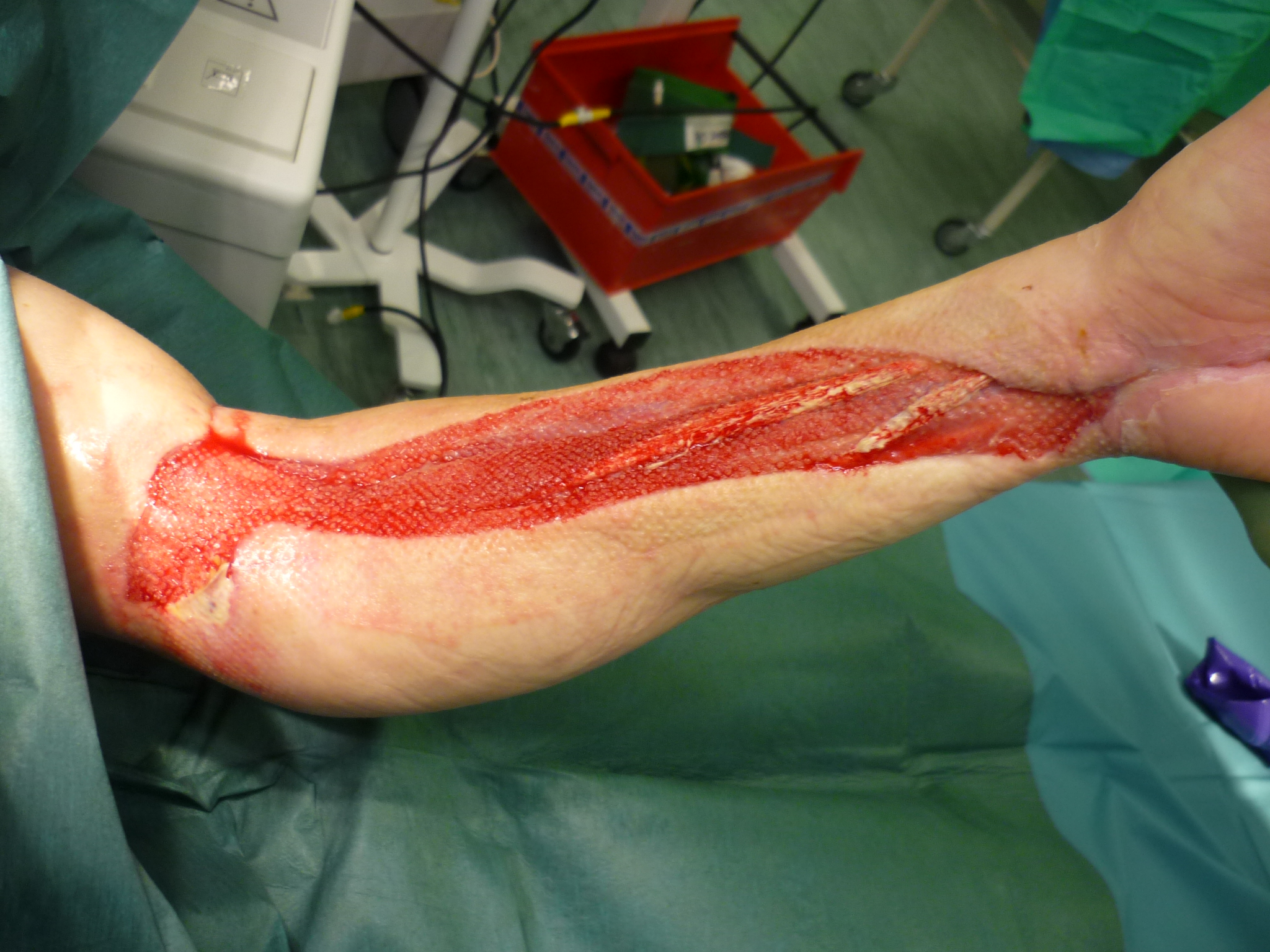Fasciectomy on:
[Wikipedia]
[Google]
[Amazon]
Fasciotomy or fasciectomy is a surgical procedure where the 
fascia
A fascia (; plural fasciae or fascias; adjective fascial; from Latin: "band") is a band or sheet of connective tissue, primarily collagen, beneath the skin that attaches to, stabilizes, encloses, and separates muscles and other internal organs. ...
is cut to relieve tension or pressure in order to treat the resulting loss of circulation to an area of tissue or muscle
Skeletal muscles (commonly referred to as muscles) are organs of the vertebrate muscular system and typically are attached by tendons to bones of a skeleton. The muscle cells of skeletal muscles are much longer than in the other types of muscl ...
. Fasciotomy is a limb-saving procedure when used to treat acute compartment syndrome. It is also sometimes used to treat chronic compartment stress syndrome. The procedure has a very high rate of success, with the most common problem being accidental damage to a nearby nerve.
Indications
Compartment syndrome is one of the conditions where a fasciotomy may be indicated. People who are likely to have injuries needing a fasciotomy include the following: *Crush injuries
A crush injury is injury by an object that causes compression of the body. This form of injury is rare in normal civilian practice, but common following a natural disaster. Other causes include industrial accidents, road traffic collisions, buil ...
* Athletes who have sustained one or more serious impact injuries
* People with severe burns
* People who are severely overweight
* Snakebite victims, but very rarely
Complications
A delay in performing the procedure can lead to neurovascular complications or lead to the need foramputation
Amputation is the removal of a limb by trauma, medical illness, or surgery. As a surgical measure, it is used to control pain or a disease process in the affected limb, such as malignancy or gangrene. In some cases, it is carried out on indi ...
of a limb. Complications can also involve the formation of scar tissue after the operation. A thickening of the surgical scars can result in the loss of mobility of the joint involved. This can be addressed through occupational or physical therapy.
Process
Fasciotomy in the limbs is usually performed by a surgeon under general or regional anesthesia. An incision is made in the skin, and a small area of fascia is removed where it will best relieve pressure. Plantar fasciotomy is anendoscopic
An endoscopy is a procedure used in medicine to look inside the body. The endoscopy procedure uses an endoscope to examine the interior of a hollow organ or cavity of the body. Unlike many other medical imaging techniques, endoscopes are insert ...
procedure. The physician makes two small incisions on either side of the heel. An endoscope is inserted in one incision to guide the physician. A tiny knife is inserted in the other. A portion of the fascia near the heel is removed. The incisions are then closed.
In addition to scar formation, there is a possibility that the surgeon may need to use a skin graft to close the wound. Sometimes when closing the fascia again in another surgical procedure, the muscle is still too large to close it completely. A small bulge is visible, but is not harmful. It takes a much longer time to heal and in some cases takes several months.
See also
* List of surgeries by type *Ischemia-repurfusion injuries of the appendicular musculoskeletal system Ischemia-reperfusion (IR) tissue injury is the resultant pathology from a combination of factors, including tissue hypoxia, followed by tissue damage associated with re-oxygenation. IR injury contributes to disease and mortality in a variety of pat ...
References
{{Muscle/soft tissue procedures Surgical procedures and techniques